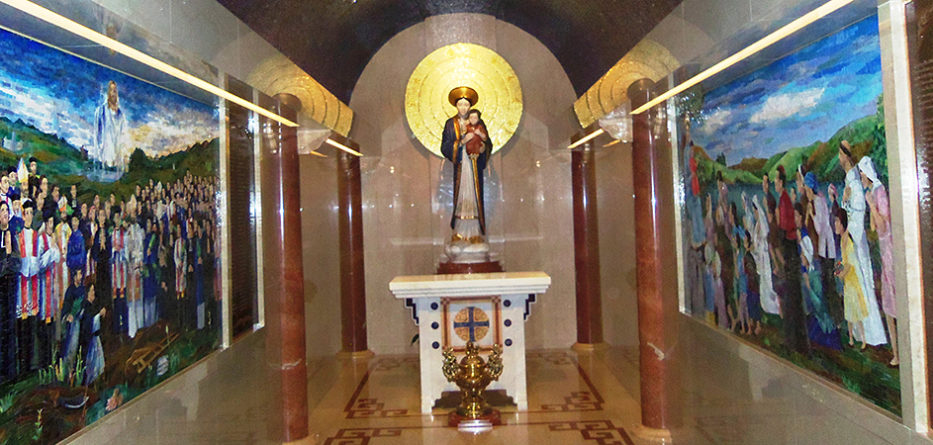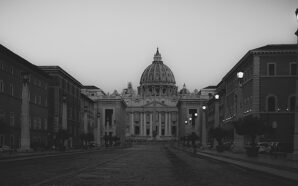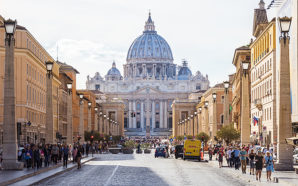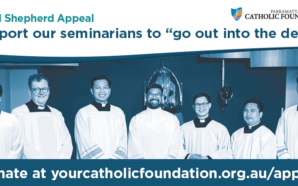Dr. Thien-Huong Ninh teaches Sociology at the University of California. Her research revolves around ethnicity, gender, and religious identities in the context of migration and globalization. In 2017 she published her book Race, Gender, and Religion in the Vietnamese Diaspora. The book studied the Vietnamese Catholics and Cao Dai Community to explore how the racialization of religion facilitates the diasporic formation of ethnic Vietnamese in the United States of America and Cambodia. Among other things, she looks at how each community relates to the female religious figures such as the Catholic Our Lady of Lavang and the Cao Dai Mother Goddess in the protection of their identity and transnational network. In the following interview, Dr. Ninh speaks about the importance of the Church in the Vietnamese Catholic diaspora.
What made you study the Catholic Vietnamese diaspora?
Born in Vietnam, I grew up in a predominantly Catholic community. As a young girl, for me, Catholicism was the norm because that was the only religion around. Vietnamese Catholics refer to themselves as people of religion. Non-Catholics were considered people without religion or those outside of religion. When I migrated to the United States as a young girl and settled in San Jose, California, and I discovered that Catholicism wasn’t the only religion there. But it was still quite influential in California.
I was still drawn and struck by the fact that Catholicism was so diverse and very ethnic. I mean the Vietnamese Catholic Church is fundamental in bringing the Vietnamese together. The church is where they meet regularly. That’s where they gather for mass, weddings, funerals and so forth. But they also celebrate the mid-autumn festival Tết Trung Thu, or the lunar new year. They also organize fundraising events for the local community in San Jose and also for the community in Vietnam. The church is also the place to share news about their relatives in Vietnam or their friends and neighbors.
For me, I was so struck by the fact that the church was not simply a place of worship; but that it was in reality the center of the Vietnamese Catholic community. So the church is an ethnic reality for Vietnamese Catholics. But there is also a great diversity among Catholics in California. They are Polish, Korean, Mexican, and Filipino Catholics too. I was very struck by that too.
What made you to study female religious figures?
I lived in Los Angeles for quite some time when I studied at the University of California and the University of Southern California (USC). There I witnessed again the great diversity within the Catholic Church. I was introduced to Our Lady of Guadalupe, an indigenous native Mexican representation of the Virgin Mary. She was everywhere…in churches, on the street, and as murals in schools. She was not only recognized by Mexican Catholics but also by non-Catholic communities too…such as Protestants or people not following a religion. You would see her, for example, at political rallies such as banners, pictures, paintings, etc. Her images were in public social spaces that were not necessarily Catholic.
It made me aware that the Vietnamese Catholic Community had also concocted their own ethnic Virgin Mary. Of course, that was our very own “ethnic” Virgin Mary, Our Lady of Lavang. She is very popular among Vietnamese Catholics. But there was hardly anything that existed about Our Lady of Lavang in academic circles. But I knew that Prof. Peter Phan at Georgetown University had studied it from a theological perspective. So, I also want to pay tribute to his work.
I was very puzzled by how she was presented. She looks very Asian, in the sense she is dressed in áo dài which is a Vietnamese traditional attire. She is very distinctive in that way. I didn’t know much about the history of Our Lady of Lavang. I wanted to dig deeper into the history and background. Is it because she appeared to the Vietnamese people in the 18th century as a Vietnamese woman or is she re-represented as a Vietnamese in a later period?
So that’s how I started researching the Vietnamese community for my Ph.D. work at USC. At first, I focussed on the classic Vietnamese community in Orange County, which has the largest number of Vietnamese outside of Vietnam on a county level. Slowly, I was able to get funding and support for my project, and I was able to expand the project from a local one into a global one. I went to Cambodia, and I was also able to study the Cao Dai community as well. I was comparing the Vietnamese Catholic Community along with some Vietnamese Cao Dai communities. And of course, I would be happy to explain why I chose those two groups if you would like me to.
Could you tell us more about this comparative approach and what the Cao Dai religion is?
My approach to this project is comparative in the sense that I want to focus on the network – the transnational religious network. In this case, Vietnamese Catholics in Cambodia, and the United States as one network. Of course, there could also be other networks such as Vietnamese in Vietnam and in France. However, my fields of focus were Cambodia and the United States. I wanted to compare the Vietnamese Catholic transnational network to the Cao Dai transnational network at the same field sites.
Why these two religions? Well, Catholicism is the religion that was introduced to Vietnam by the Portuguese, and further solidified under French influence. So, it’s what I would approach as a “non-Vietnamese religion.”
In comparison, Cao Daism is a distinctively indigenous Vietnamese religion. Certainly, it has French elements but it is distinctly Vietnamese in the sense that it was born in Vietnam; and it did not have any footprints in anywhere else outside Cambodia. But slowly it did move to neighboring Cambodia. But before 1975 (when the Vietnam war ended), it did not have a lot of contacts or footprints in other countries. Hence, it’s very Vietnamese in that way.
What was the focus of the study?
I wanted to particularly look at Vietnamese immigrants, particularly refugees, who are Vietnamese and of a Catholic faith which is again “non-Vietnamese.” I also wanted to study how they adapt locally and globally when they go to other countries.
So, one is the Catholic transnational network, and the other is Cao Dao based in Cambodia and the United States. At the heart of this is the comparison of some questions such as the forces of local assimilation. The hypothesis is that if you are Vietnamese then you are an ethnic minority in the United States and Cambodia.
Catholics are influential in the United States. If you move around you can see so many churches. The Catholic Church also has a presence in many countries. The hypothesis is that the Vietnamese immigrants who are Catholics would have an easier transition to local adaptation.
They would also become less ethnic because they are interacting with Catholics who are of different ethnic and racial backgrounds. So, that’s one hypothesis.
The hypothesis for the Vietnamese Cao Dai is if they migrate to another country, they have little chance to find a Cao Dai temple. They would have to build it themselves. The hypothesis is that even if they migrate and live in a foreign nation, they would be more ethnically insular. This means they would have to interact with Vietnamese Cao Dai and the world.
So I wanted to compare the two transnational networks.
In the process of my studies, I found that it is much more complex than perceived it to be. There are many more nuances. I also discovered several surprising findings. In particular, Vietnamese Catholics appear to be in many ways more ethnic, and the Cao Dai on the other hand take more initiatives to reach beyond their ethnic community.
How does the mother figure of the Virgin Mary plays a role among Vietnamese Catholics in the United States and Cambodia?
As I mentioned a little bit earlier, Vigna Lavang, or Our Lady of Lavang is popular among Vietnamese Catholics. She is present even in California. But little has been written about her except by Prof. Peter Phan, who wrote about the history of the Marian apparition in Vietnam.
As a sociologist, I wanted to build on that with research on the contemporary Vietnamese Catholic Community. I wanted to build on Prof. Phan’s historical and theological work. I went to the Vietnamese Catholic Community and attended various events and talked to people.
I asked them why was it that Virgin Mary looked Vietnamese? I just wanted to know what they would say. I did not know the stories behind that. I spoke with all sections of Catholics—priests, nuns, and ordinary people. I wanted to know what their understanding was of Our Lady of Lavang. They told me all kinds of stories that overlapped and changed according to their understanding.
Some answers said she always appeared to them as Vietnamese. Some responses said that she is their mother hence she is supposed to be Vietnamese. Some also said that she may have appeared in Vietnamese dress. Some others said she is close to people and therefore she may appear in different dresses of Mexican, Vietnamese, Korean and so forth.
I asked them about their thoughts on the meaning of the statues. Some said the statues were made in Italy. It was interesting to note that they thought Italians would know how to sculpt Virgin Mary in Vietnamese style. Some said the statues were made in Vietnam. Similarly, Californians would say it was made locally. My point here is that I got all kinds of answers. And, I wanted to dig deeper.
I decided to conduct research on Our Lady of Lavang and more. I discovered that the original statue of Our Lady of Lavang was modeled after Our Lady of Victories, Paris. It was the image of a European-looking woman with a Vietnamese name, for almost 100 years. The French bishop of the time wanted to have a representation of Our Lady of Lavang, who the locals believed appeared to them. That happened after almost a century after the image first appeared.
What’s fascinating is that the Vietnamese Catholics in the US also transformed her image into a Vietnamese woman.
It started with a well-known Vietnamese sculptor Van Nhan. He had promised to God and Virgin Mary to devote his life to the work of the catholic church with his skills if they would protect him during his exodus from Vietnam to wherever he went. When he re-settled safely in California, he decided to make a statue of the Virgin Mary as a Vietnamese woman. But that was never accepted as it was made for his artistic expression. Because at that time there was no representation of a Vietnamese Virgin Mary.
However, during 1990’s, the Orange County Catholic Diocese wanted to show its commitment firmly and expressively to diversity and multiculturalism within the Catholic Church. So, the Bishop allowed the Vietnamese community to have their cultural center, as well as a Vietnamese-looking Virgin Mary if they wanted to.
They commissioned the sculptor Van Nhan to build a statue of the Virgin Mary looking like a Vietnamese woman. That statue is Our Lady of Vietnam, which did not have any historical connection to Our Lady of Lavang. That occurred in 1995. Vietnam and the United States did not normalize their relationships until 1995. That meant that the Vietnamese Catholics in the United States had very little contact with Vietnamese Catholics from Vietnam. This no-contact state went on for almost two decades since the fall of Saigon in 1975.
Then with time, the relationship between Vietnam and United States normalized. Priests from Vietnam were allowed to visit the United States. They visited the Vietnamese Community in California and they saw the statue and liked it. The 200th commemoration of Our Lady of Lavang was coming up in three years in 1998. They felt that they should consider the Vietnamese representation of the Our Lady and have it in Vietnam.
They commissioned a project and selected sculptor Van Nhan to re-represent, Our Lady of Lavang, as a Vietnamese woman. So, in 1998 Virgin Mary was officially revealed by the Vietnamese Catholic Church in her current image as a Vietnamese woman. Since then, there have been many iterations of her image wearing áo dài, the traditional Vietnamese attire.
She can now be found in many countries such as Germany, France, Canada, the United States, and most recently Israel.
I was in Israel 2 years ago to understand how Vietnamese Catholics found a piece of land in Israel and have the statue of a Vietnamese-looking Virgin Mary in the land where the European Virgin Mary was born. So that’s how I became fascinated by this Virgin Mary.
Firstly, she was transformed visually in the diaspora. Secondly, she is a symbol of the Vietnamese Catholic faith, and she has been instrumental in facilitating the ties among Vietnamese Catholics around the world. For example, they would come together to raise funds and have a statue of her in Israel. For instance, they would attend celebrations for her in August all over the world and not just in Vietnam.
She is not just a statue, and she is not just Virgin Mary. She is very special to the Vietnamese Catholic community and the diaspora.
What has been the most challenging in your research?
Several things, I must say.
In Cambodia for example, the ethnic Vietnamese community has lived in a very precarious situation. Partly or largely because of their necessity, being Vietnamese. So as a Vietnamese American woman trying to understand the ethnic view in the community within the context of Cambodia, I was in between two worlds.
I am Vietnamese, but I am not a Vietnamese who has lived in Cambodia or Vietnam. I think building trust with local Vietnamese was very important so that they would talk to me and share with me about their lives.
In Vietnam on the one hand, I was an insider and on the other hand, I was an outsider because I had emigrated to the United States. When I speak Vietnamese, some people could detect my accent which is of a refugee from the young generation. So, my Vietnamese background, opened some doors for me, which would have been difficult for some people to access.
It also meant some challenges, such as navigating the local political terrain. I needed to make sure not to attract any unnecessary attention from the local government. I was simply trying to understand the people’s faith and their connection to Vietnamese in other countries.
How is your research impacting your understanding of World Catholicism?
My research has certainly opened my eyes to see how Vietnamese, Asians, and the “people of the south” minority people, are breathing a new and vibrant life into the Catholic Church.
This new vibrant life is intertwined closely not only with the faith but also with the issues around them such as social justice and social inequality such as race, ethnicity, and gender. So, Catholicism should be the strong force of social justice. It needs to recognize that faith is not simply just faith, it’s not just within the walls of churches, but also that it is intertwined, embedded with our living lives, our social lives.
This is an edited version of the Podcast interview that appeared in the webpage of Initiative for the Study of Asian Catholics (ISAC). The initiative, hosted by the Asia Research Institute at the National University of Singapore, is a global network of social scientists who develop new research projects to analyze live realities and the social contribution of Asian Catholics. It aims to deepen and promote academic research on Catholic life in contemporary Asia.
Michel Chambon is a French theologian and cultural anthropologist who studies Christianity in the Chinese world. At the National University of Singapore, he coordinates ISAC, the Initiative for the Study of Asian Catholics http://www.isac-research.org
With thanks to Union of Catholic Asian (UCA) News and Michel Chambon, where this article originally appeared.








